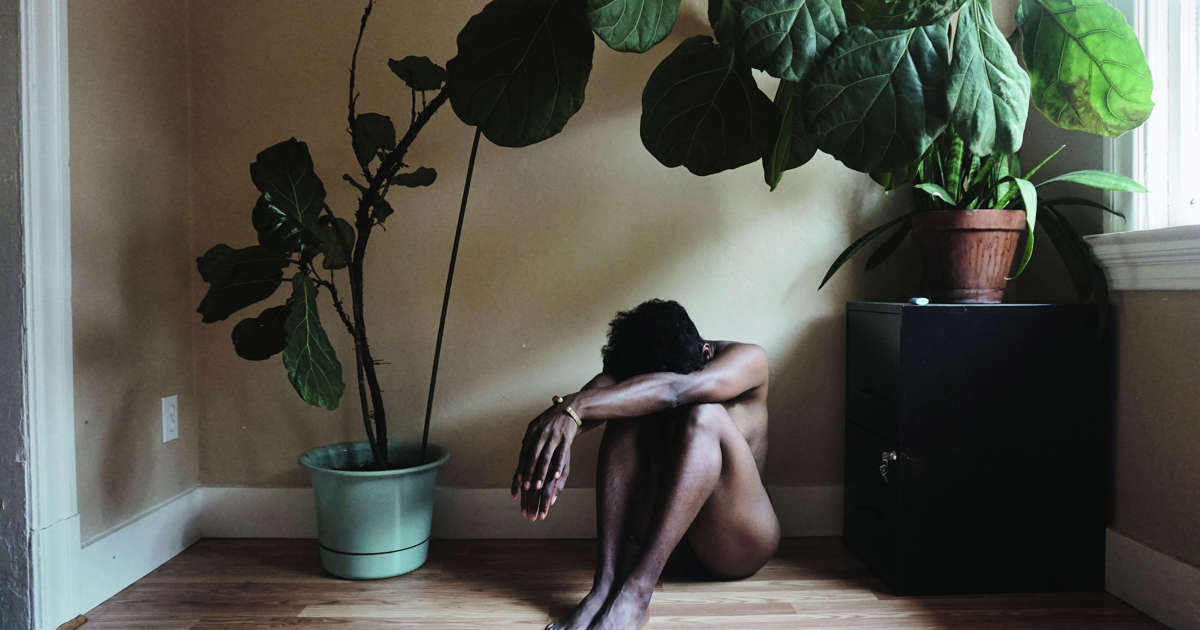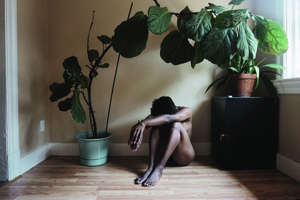[ad_1]
© Texas Isaiah
Texas Isaiah, “My Name Is My Name I,” 2016, from As We Rise: Photography from the Black Atlantic (Aperture, 2021).
Growing up in the small southern Ontario city of Windsor in the 1960s and ‘70s, Kenneth Montague had a front-row seat to a much bigger cultural world roiling and unfolding just across the Detroit River.
The river serves as the border between Canada and the United States, and the seven interconnected towers of Detroit’s Renaissance Center — today a monument to failed efforts at urban renewal in the 1970s — remain the most prominent feature of the diminutive Windsor skyline.
They’ve helped to make Detroit a constant presence in the Windsor psyche, within easy reach but a world away. Montague’s parents, both of whom had immigrated to Canada from Jamaica before he was born, indulged their son in the cultural riches of the city across the water. Whether it was the wonder of the Detroit Institute of Arts, or the musical splendor of Motown, it left a lasting imprint on the young Montague’s mind.
On one trip to DIA, he recalls, “I remember seeing a photograph by James Van Der Zee (from 1932) of a Black couple in Harlem in their raccoon coats and their Cadillac with whitewall tires,” he said. “And that was just not what I was seeing growing up, in my era of “Sanford and Son,” or “Good Times” — just that general buffoonery that dominated the portrayal of Black culture that in no way reflected my middle-class, Black family in Canada. It was a moment of clarity: I thought, ‘There’s something I can aspire to.’”
Some 30 years later, Montague, now 60, carried those experiences into the world of art collecting as a young dentist in Toronto. The first picture he acquired, in 1999, was that Van Der Zee image of the couple in their finery; it spurred a passion project, blossoming into a collection and a slate of collaborative curatorial projectsthat he’s stewarded from his downtown Toronto apartment into a significant photo volume published by the Aperture Foundation and a museum exhibition soon to arrive at the Peabody Essex Museum. “As We Rise: Photography from the Black Atlantic,” a show of more than 100 works from Montague’s photography collection, opens at PEM on June 17.
But growing up in Detroit’s sphere was by no means uniformly inspiring. One of his earliest memories, as a 5-year-old, was a bleakly hot day in July 1967 when even in Windsor his parents were sent home early from work for fear of their own safety, as the city they’d come to love erupted in riots and violence. They stood in their living room facing the river, watching smoke billow above the Detroit skyline. “It was apocalyptic,” he said.
The exhibition’s title, encompassing both inspiration and trauma, is also deeply personal: Montague’s father, Spurgeon, would tell his son that as Black immigrants rooting themselves in a sometimes-inhospitable milieu, striving to achieve was important. “He would always tell me, ‘As you do well, Ken, you bring up others in your community.’” The publishers at Aperture took the story as inspiration, distilling it to “As We Rise,” an apt rubric for the collection as a whole. While by no means uniform — it has grown from its roots in photography to include painting and other media — the collection is notable for its frank, dignified portrayals of everyday people throughout the Black diaspora, whether in Europe, the Americas, or Africa itself.
“There are so many works in the exhibition where there’s a real connection between the photographer and the sitter,” said Elliott Ramsey, the curator at the Polygon Gallery in Vancouver, British Columbia, which organized the show. “It could be quite intense to be surrounded by these very direct gazes — confrontational or even aggressive. But in ‘As We Rise,’ it never feels that way. Remember, these are images of Black life by Black photographers. There’s a warmth, a reciprocity, an inherent sense of trust.”
For Montague, that unity wasn’t consciously intended, but something deep inside him that bubbled up into his collecting. “For me, that settlement journey was always about uplift,” he said. “Certainly, there are images of protest, images of unrest. But Aperture was very smart in figuring out, I think, what the collection, organically, was about: Community, identity, and power.”
The collection’s humble beginnings and eventual arrival in the halls of more official culture track a recent evolutionary arc of cultural diversity itself. Montague was never one to buy things and tuck them away in storage; in his Toronto apartment, he would stage small exhibitions and salons with guest speakers and create a convivial atmosphere where the invitation was open to all (he calls the work he’s acquired the “Wedge Collection” because of the apartment’s awkward, not-quite-square walls; his curatorial arm is called “Wedge Curatorial Projects.”)
At the time, he was acquiring pieces by Black artists like Barkley Hendricks, Jamel Shabazz, and Van Der Zee, who, by now, have become renowned names in the pantheon of Black art. There’s some satisfaction, Montague says, with following a passion and then having the world catch up to him. “When I started, contemporary African art was this exotic thing for a lot of collectors; it was certainly fringey for a lot of publications and museums,” he said. “These were things I wasn’t seeing on the walls of galleries or museums, and I wanted to make a space for them.”
“As We Rise” has already been staged at the Art Museum at the University of Toronto and the Polygon Gallery. PEM is its first American venue, and further dates are currently under negotiation, but not yet confirmed. For the PEM presentation, the exhibition will change shape; curator Stephanie Tung conceived a frame that embraces the impassioned, organic evolution of the collection itself.
“We were thinking about, ‘What can we add to the conversation?’” she said. “It’s a show of 100-plus works, but 75 artists, so it’s fascinating but disparate. We wanted to build groupings that would be resonant with each other.”
Working with Ramsey, Tung conceived a presentation inspired by the elliptical verse/chorus patterns of the musical staples of jazz and Motown close to Montague’s project, and heart. The structure, she hopes, will create “a chorus of voices that achieve a kind of harmony,” she said, assigning organizing rubrics like belonging, family, and self-fashioning, to the collection. “We’re working within themes, and variations on themes.”
For Montague, it’s been satisfying to see a happenstance life’s pursuit refashioned as a coherent narrative that he hoped might come together one day. “I’m not a professional curator,” he said, “but I always had this idea of storytelling. So many of these things were happy accidents. I just bought the work on a dentist’s income because that’s what I could afford. I’m a very middle-class collector, so this is a very gratifying experience for me.”
AS WE RISE: Photography from the Black Atlantic
At Peabody Essex Museum, 161 Essex St., Salem. June 17 through Dec. 31. 978-745-9500, www.pem.org
[ad_2]

